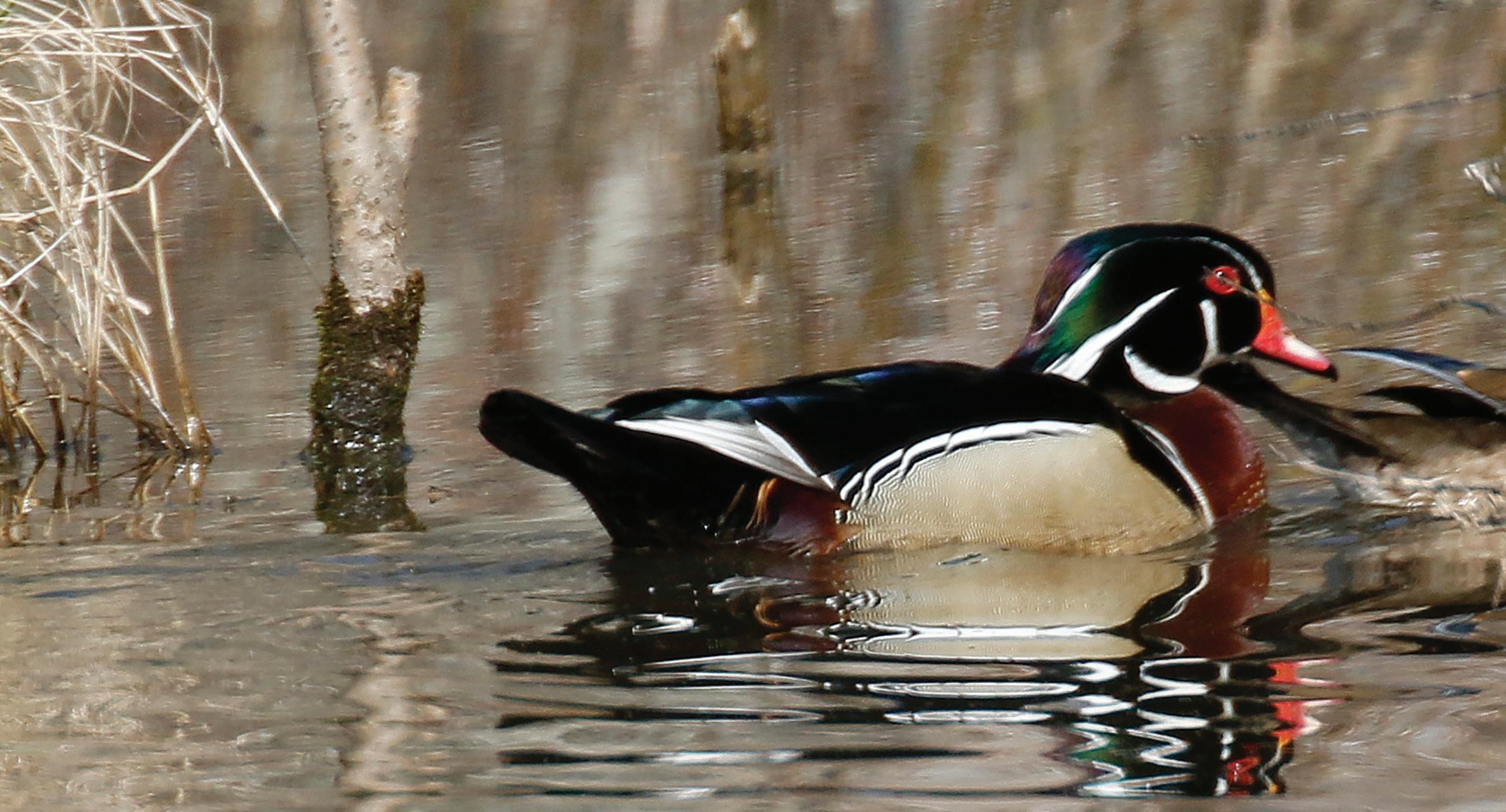WOODS, WATERS, AND WILDLIFE
From boom to bust and back again Wood ducks survive tough times to thrive in the Buckeye State. STORY AND PHOTOS BY W.H. “CHIP” GROSS
Y
oung wood ducks have a tough start in life. Hatched in a tree cavity 50 feet or more from the ground, they have less than a day to rest and dry their downy feathers after fighting their way out of the eggshell before their mother decides it’s time to leave the nest. Flying down to the base of the tree, the female woody begins calling to her brood of possibly a dozen or more ducklings. Hearing her voice, they react instinctively: One at a time, they climb to the edge of the nest hole and launch themselves into the air. Weighing only a few ounces and still two months from being able to fly, a duckling tumbles end over end, hits the ground — hard — but bounces up like a little ping-pong ball and scurries to its mother. When the hen is sure that all her offspring have gathered, she leads them quickly to the nearest stream, pond, swamp, or marsh. Though the ducklings are now safer than they were on land, they’re not yet totally out of danger. From below, a snapping turtle or largemouth bass would like nothing better than to make a meal of an
12 OHIO COOPERATIVE LIVING • MARCH 2021
unsuspecting duckling. From above, a great blue heron or other avian predator could easily take one as well. But if a young wood duck survives those many dangers — and is a male — it will mature into one of the most strikingly beautiful waterfowl in all of North America. If female, its plumage will be grayish-brown, providing camouflage for next spring when it raises its own brood of young ducklings, usually in the same area it was reared. Wood ducks — native to the Buckeye State — are doing quite well, with a strong population in Ohio, but that has not always been the case. During the 1800s, as Ohio’s virgin forests were cleared to make way for cities, towns, and farm fields, the natural nesting cavities in those giant trees disappeared, and the number of wood ducks plummeted. Some wildlife biologists even predicted the extinction of the wood duck by 1930. Thanks to an aggressive nest-box program during the latter half of the 20th century, the wood duck was rescued from oblivion and its numbers restored.




